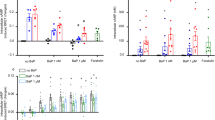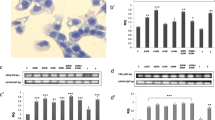Abstract
Dichlorodiphenyltrichloroethane (p,p′DDT) is an endocrine-disrupting chemical (EDC). Several studies showed an association between p,p′DDT exposure and reprotoxic effects. We showed that p,p′DDT was a positive allosteric modulator of human follitropin receptor (FSHR). In contrast, we demonstrated that p,p′DDT decreased the cyclic AMP (cAMP) production induced by human choriogonadotropin (hCG). This study evaluated further the effects of p,p′DDT on Gs-, β-arrestin 2- and steroidogenesis pathways induced by hCG or luteinizing hormone (LH). We used Chinese hamster ovary cells line stably expressing hCG/LHR. The effects of 10–100 µM p,p′DDT on cAMP production and on β-arrestin 2 recruitment were measured using bioluminescence and time-resolved resonance energy transfer technology. The impact of 100 µM of p,p′DDT on steroid secretion was analysed in murine Leydig tumor cell line (mLTC-1). In cAMP assays, 100 µM p,p′DDT increased the EC50 by more than 300% and reduced the maximum response of the hCG/LHR to hCG and hLH by 30%. This inhibitory effect was also found in human granulosa cells line and in mLTC-1 cells. Likewise, 100 µM p,p′DDT decreased the hCG- and hLH-promoted β-arrestin 2 recruitment down to 14.2 and 26.6%, respectively. Moreover, 100 µM p,p′DDT decreased by 30 and 47% the progesterone secretion induced by hCG or hLH, respectively, without affecting testosterone secretion. This negative effect of p,p'DDT was independent of cytotoxicity. p,p′DDT acted as a negative allosteric modulator of the hCG/LHR signalling. This emphasizes the importance of analyzing all receptor-downstream pathways to fully understand the deleterious effects of EDC on human health.



Similar content being viewed by others
Abbreviations
- GPCR:
-
G-protein-coupled receptor
- DMSO:
-
Dimethyl sulfoxide
- DDT:
-
Dichlorodiphenyltrichloroethane
- LH:
-
Luteinizing hormone
- hCG:
-
Human choriogonadotropin
- AC:
-
Adenylyl cyclase
- PKA:
-
Protein kinase A
- EPAC:
-
Exchange Protein Activated by cAMP
- FSH:
-
Follicle stimulating hormone
- BRET:
-
Bioluminescence and time-resolved resonance energy transfer
- V2R:
-
Vasopressin 2 receptor
References
Aamir M, Khan S, Li G (2018) Dietary exposure to HCH and DDT congeners and their associated cancer risk based on Pakistani food consumption. Environ Sci Pollut Res Int 25:8465–8474. https://doi.org/10.1007/s11356-017-1129-1
Al-Hussaini TK, Abdelaleem AA, Elnashar I et al (2018) The effect of follicullar fluid pesticides and polychlorinated biphenyls concentrations on intracytoplasmic sperm injection (ICSI) embryological and clinical outcome. Eur J Obstet Gynecol Reprod Biol 220:39–43. https://doi.org/10.1016/j.ejogrb.2017.11.003
Al-Saleh I, Coskun S, El-Doush I et al (2009) Outcome of in-vitro fertilization treatment and DDT levels in serum and follicular fluid. Med Sci Monit 15:BR320–BR333
Andressen KW, Ulsund AH, Krobert KA et al (2017) Related GPCRs couple differently to Gs: preassociation between G protein and 5-HT7 serotonin receptor reveals movement of Gαs upon receptor activation. FASEB J 32:1059–1069. https://doi.org/10.1096/fj.201700486R
Aneck-Hahn NH, Schulenburg GW, Bornman MS et al (2007) Impaired semen quality associated with environmental DDT exposure in young men living in a malaria area in the Limpopo Province, South Africa. J Androl 28:423–434. https://doi.org/10.2164/jandrol.106.001701
Ascoli M, Fanelli F, Segaloff DL (2002) The lutropin/choriogonadotropin receptor, a 2002 perspective. Endocr Rev 23:141–174. https://doi.org/10.1210/edrv.23.2.0462
Ayoub MA, Landomiel F, Gallay N et al (2015) Assessing gonadotropin receptor function by resonance energy transfer-based assays. Front Endocrinol (Lausanne) 6:130. https://doi.org/10.3389/fendo.2015.00130
Ayoub MA, Yvinec R, Jégot G et al (2016) Profiling of FSHR negative allosteric modulators on LH/CGR reveals biased antagonism with implications in steroidogenesis. Mol Cell Endocrinol 436:10–22. https://doi.org/10.1016/j.mce.2016.07.013
Bapayeva G, Issayeva R, Zhumadilova A et al (2016) Organochlorine pesticides and female puberty in South Kazakhstan. Reprod Toxicol 65:67–75. https://doi.org/10.1016/j.reprotox.2016.06.017
Binkowski BF, Fan F, Wood KV (2011) Luminescent biosensors for real-time monitoring of intracellular cAMP. Methods Mol Biol 756:263–271. https://doi.org/10.1007/978-1-61779-160-4_14
Bloom MS, Fujimoto VY, Storm R et al (2017) Persistent organic pollutants (POPs) in human follicular fluid and in vitro fertilization outcomes, a pilot study. Reprod Toxicol 67:165–173. https://doi.org/10.1016/j.reprotox.2017.01.004
Bonomi M, Busnelli M, Persani L et al (2006) Structural differences in the hinge region of the glycoprotein hormone receptors: evidence from the sulfated tyrosine residues. Mol Endocrinol 20:3351–3363. https://doi.org/10.1210/me.2005-0521
Bornman M, Delport R, Farías P et al (2018) Alterations in male reproductive hormones in relation to environmental DDT exposure. Environ Int 113:281–289. https://doi.org/10.1016/j.envint.2017.12.039
Casarini L, Lispi M, Longobardi S et al (2012) LH and hCG action on the same receptor results in quantitatively and qualitatively different intracellular signalling. PLoS ONE 7:e46682. https://doi.org/10.1371/journal.pone.0046682
Casarini L, Santi D, Brigante G, Simoni M (2018) Two hormones for one receptor: evolution, biochemistry, actions, and pathophysiology of LH and hCG. Endocr Rev 39:549–592. https://doi.org/10.1210/er.2018-00065
Eskenazi B, Rauch SA, Tenerelli R et al (2017) In utero and childhood DDT, DDE, PBDE and PCBs exposure and sex hormones in adolescent boys: the CHAMACOS study. Int J Hyg Environ Health 220:364–372. https://doi.org/10.1016/j.ijheh.2016.11.001
Gaspari L, Sampaio DR, Paris F et al (2012) High prevalence of micropenis in 2710 male newborns from an intensive-use pesticide area of Northeastern Brazil: micropenis and endocrine-disrupting chemicals. Int J Androl 35:253–264. https://doi.org/10.1111/j.1365-2605.2011.01241.x
Gore AC, Chappell VA, Fenton SE et al (2015) EDC-2: the endocrine society’s second scientific statement on endocrine-disrupting chemicals. Endocr Rev 36:E1–E150. https://doi.org/10.1210/er.2015-1010
Grzesik P, Kreuchwig A, Rutz C et al (2015) Differences in signal activation by LH and hCG are mediated by the LH/CG receptor’s extracellular hinge region. Front Endocrinol (Lausanne) 6:140. https://doi.org/10.3389/fendo.2015.00140
Gudermann T, Birnbaumer M, Birnbaumer L (1992a) Evidence for dual coupling of the murine luteinizing hormone receptor to adenylyl cyclase and phosphoinositide breakdown and Ca2+ mobilization. Studies with the cloned murine luteinizing hormone receptor expressed in L cells. J Biol Chem 267:4479–4488
Gudermann T, Nichols C, Levy FO et al (1992b) Ca2+ mobilization by the LH receptor expressed in Xenopus oocytes independent of 3′,5′-cyclic adenosine monophosphate formation: evidence for parallel activation of two signaling pathways. Mol Endocrinol 6:272–278. https://doi.org/10.1210/mend.6.2.1314958
Guo Z, Qiu H, Wang L et al (2017) Association of serum organochlorine pesticides concentrations with reproductive hormone levels and polycystic ovary syndrome in a Chinese population. Chemosphere 171:595–600. https://doi.org/10.1016/j.chemosphere.2016.12.127
Habert R, Muczynski V, Grisin T et al (2014) Concerns about the widespread use of rodent models for human risk assessments of endocrine disruptors. Reproduction 147:R119-129. https://doi.org/10.1530/REP-13-0497
Jarrell JF, Villeneuve D, Franklin C et al (1993) Contamination of human ovarian follicular fluid and serum by chlorinated organic compounds in three Canadian cities. CMAJ 148:1321–1327
Jiang LI, Collins J, Davis R et al (2007) Use of a cAMP BRET sensor to characterize a novel regulation of cAMP by the sphingosine 1-phosphate/G13 pathway. J Biol Chem 282:10576–10584. https://doi.org/10.1074/jbc.M609695200
Jirsová S, Masata J, Jech L, Zvárová J (2010) Effect of polychlorinated biphenyls (PCBs) and 1,1,1-trichloro-2,2,-bis (4-chlorophenyl)-ethane (DDT) in follicular fluid on the results of in vitro fertilization-embryo transfer (IVF-ET) programs. Fertil Steril 93:1831–1836. https://doi.org/10.1016/j.fertnstert.2008.12.063
Kiyosawa N, Kwekel JC, Burgoon LD et al (2008) Species-specific regulation of PXR/CAR/ER-target genes in the mouse and rat liver elicited by o,p′-DDT. BMC Genomics 9:487. https://doi.org/10.1186/1471-2164-9-487
Klett D, Meslin P, Relav L et al (2016) Low reversibility of intracellular cAMP accumulation in mouse Leydig tumor cells (MLTC-1) stimulated by human luteinizing hormone (hLH) and chorionic gonadotropin (hCG). Mol Cell Endocrinol 434:144–153. https://doi.org/10.1016/j.mce.2016.06.028
Longnecker MP, Klebanoff MA, Dunson DB et al (2005) Maternal serum level of the DDT metabolite DDE in relation to fetal loss in previous pregnancies. Environ Res 97:127–133. https://doi.org/10.1016/S0013-9351(03)00108-7
Martin SA, Harlow SD, Sowers MF et al (2002) DDT metabolite and androgens in African–American farmers. Epidemiology 13:454–458. https://doi.org/10.1097/00001648-200207000-00014
Munier M, Grouleff J, Gourdin L et al (2016) In vitro effects of the endocrine disruptor p,p′DDT on human follitropin receptor. Environ Health Perspect. https://doi.org/10.1289/ehp.1510006
Nagirnaja L, Venclovas Č, Rull K et al (2012) Structural and functional analysis of rare missense mutations in human chorionic gonadotrophin β-subunit. Mol Hum Reprod 18:379–390. https://doi.org/10.1093/molehr/gas018
Nishi Y, Yanase T, Mu Y et al (2001) Establishment and characterization of a steroidogenic human granulosa-like tumor cell line, KGN, that expresses functional follicle-stimulating hormone receptor. Endocrinology 142:437–445. https://doi.org/10.1210/endo.142.1.7862
Pan W, Ye X, Yin S et al (2019) Selected persistent organic pollutants associated with the risk of primary ovarian insufficiency in women. Environ Int 129:51–58. https://doi.org/10.1016/j.envint.2019.05.023
Perry MJ, Ouyang F, Korrick SA et al (2006) A prospective study of serum DDT and progesterone and estrogen levels across the menstrual cycle in nulliparous women of reproductive age. Am J Epidemiol 164:1056–1064. https://doi.org/10.1093/aje/kwj329
Petrelli G, Figà-Talamanca I, Lauria L, Mantovani A (2003) Spontaneous abortion in spouses of greenhouse workers exposed to pesticides. Environ Health Prev Med 8:77–81. https://doi.org/10.1007/BF02897919
Qian Z, Luo F, Wu C et al (2017) Indicator polychlorinated biphenyls (PCBs) and organochlorine pesticides (OCPs) in seafood from Xiamen (China): levels, distributions, and risk assessment. Environ Sci Pollut Res Int 24:10443–10453. https://doi.org/10.1007/s11356-017-8659-4
Rebois RV (1982) Establishment of gonadotropin-responsive murine leydig tumor cell line. J Cell Biol 94:70–76. https://doi.org/10.1083/jcb.94.1.70
Riccetti L, Yvinec R, Klett D et al (2017) Human luteinizing hormone and chorionic gonadotropin display biased agonism at the LH and LH/CG receptors. Sci Rep 7:940. https://doi.org/10.1038/s41598-017-01078-8
Rossi M, Dimida A, Dell’anno MT et al (2007) The thyroid disruptor 1,1,1-trichloro-2,2-bis(p-chlorophenyl)-ethane appears to be an uncompetitive inverse agonist for the thyrotropin receptor. J Pharmacol Exp Ther 320:465–474. https://doi.org/10.1124/jpet.106.113613
Saoudi A, Fréry N, Zeghnoun A et al (2014) Serum levels of organochlorine pesticides in the French adult population: the French National Nutrition and Health Study (ENNS), 2006–2007. Sci Total Environ 472:1089–1099. https://doi.org/10.1016/j.scitotenv.2013.11.044
Seifert R, Wenzel-Seifert K, Gether U, Kobilka BK (2001) Functional differences between full and partial agonists: evidence for ligand-specific receptor conformations. J Pharmacol Exp Ther 297:1218–1226
Suteau V, Briet C, Lebeault M et al (2020) Human amniotic fluid-based exposure levels of phthalates and bisphenol A mixture reduce INSL3/RXFP2 signaling. Environ Int 138:105585. https://doi.org/10.1016/j.envint.2020.105585
Tavares RS, Amaral S, Paiva C et al (2015) In vitro exposure to the organochlorine p,p′-DDE affects functional human sperm parameters. Chemosphere 120:443–446. https://doi.org/10.1016/j.chemosphere.2014.08.075
Thompson LA, Ikenaka Y, Darwish WS et al (2018) Investigation of mRNA expression changes associated with field exposure to DDTs in chickens from KwaZulu-Natal, South Africa. PLoS ONE 13:e0204400. https://doi.org/10.1371/journal.pone.0204400
Ulsund AH, Dahl M, Frimurer TM et al (2018) Preassociation between the 5-HT7 serotonin receptor and G protein Gs: molecular determinants and association with low potency activation of adenylyl cyclase. FASEB J 33:3870–3886. https://doi.org/10.1096/fj.201800805RR
Vassart G, Pardo L, Costagliola S (2004) A molecular dissection of the glycoprotein hormone receptors. Trends Biochem Sci 29:119–126. https://doi.org/10.1016/j.tibs.2004.01.006
Venners SA, Korrick S, Xu X et al (2005) Preconception serum DDT and pregnancy loss: a prospective study using a biomarker of pregnancy. Am J Epidemiol 162:709–716. https://doi.org/10.1093/aje/kwi275
Wójtowicz AK, Milewicz T, Gregoraszczuk EŁ (2008) Time-dependent action of DDT (1,1,1-trichloro-2,2-bis(p-chlorophenyl)ethane) and its metabolite DDE (1,1-dichloro-2,2-bis(p-chlorophenyl)ethylene) on human chorionic gonadotropin and progesterone secretion. Gynecol Endocrinol 24:54–58. https://doi.org/10.1080/09513590701666803
World Health Organization (2018) World malaria report 2018 ISBN 978-92-4-156565-3
Zoeller RT, Brown TR, Doan LL et al (2012) Endocrine-disrupting chemicals and public health protection: a statement of principles from The Endocrine Society. Endocrinology 153:4097–4110. https://doi.org/10.1210/en.2012-1422
Acknowledgements
We thank Yves Combarnous (INRA-CNRS Nouzilly, Physiologie de la Reproduction et des comportements) for generously giving us the mLTC-1 cells line and Nadine Binart (Inserm U1185, Université Paris-Sud) for generously giving us the KGN cell line.
Funding
The authors did not receive support from any organization for the submitted work.
Author information
Authors and Affiliations
Contributions
MM and MA conceived the study, performed research, analyzed data and wrote the paper; VS and DH wrote the paper; LG performed research; ER and PR conceived study and wrote the paper. All authors read and approved the final manuscript.
Corresponding author
Ethics declarations
Conflict of interest
The authors have no relevant financial or non-financial interests to disclose.
Additional information
Publisher's Note
Springer Nature remains neutral with regard to jurisdictional claims in published maps and institutional affiliations.
Supplementary Information
Below is the link to the electronic supplementary material.
Rights and permissions
About this article
Cite this article
Munier, M., Ayoub, M., Suteau, V. et al. In vitro effects of the endocrine disruptor p,p′DDT on human choriogonadotropin/luteinizing hormone receptor signalling. Arch Toxicol 95, 1671–1681 (2021). https://doi.org/10.1007/s00204-021-03007-1
Received:
Accepted:
Published:
Issue Date:
DOI: https://doi.org/10.1007/s00204-021-03007-1




